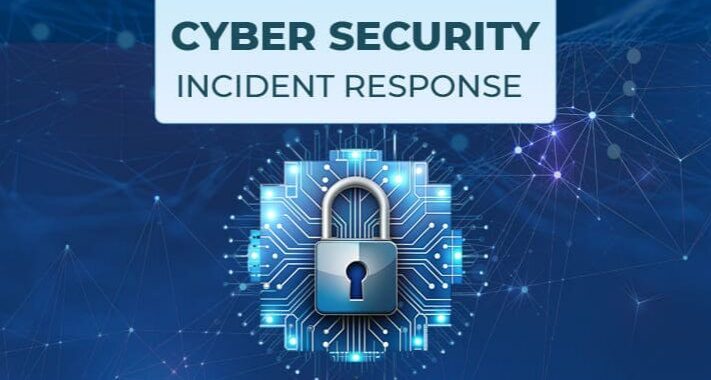A cybersecurity incident is not just a technical problem; it’s a fast-moving crisis. The moment a breach is suspected or detected, an invisible clock starts ticking. Every second that passes without a coordinated, rapid response significantly escalates the risk and amplifies the potential damage. The urgency involved isn’t just a matter of best practice; it’s a fundamental necessity for mitigating harm.
The Expanding Threat: Time Fuels the Fire
A cybersecurity incident rarely stops at a single point of entry. Malicious actors, once inside a network, act quickly. They exploit vulnerabilities, move laterally across systems, escalate privileges, and hunt for valuable data – be it financial information, intellectual property, or sensitive personal details.
- Spread: The longer an attacker remains undetected or unchallenged, the wider their reach becomes. What starts as a compromised user account can quickly become a foothold in critical servers, databases, or even industrial control systems. The attack surface grows exponentially with each passing minute.
- Data Exfiltration: Attackers often have a clear objective: to steal data. The more time they have, the more data they can copy, encrypt (in the case of ransomware), or destroy. This directly translates into greater financial loss, reputational damage, and potential legal liabilities for the organization.
- Establishing Persistence: Attackers work to ensure they can return even after initial defenses are initially raised. They install backdoors, create new user accounts, or modify system configurations to maintain access long-term. A delayed response gives them ample time to fortify their position within the network.
The Vanishing Trail: Evidence Fades with Time
Cyber investigations rely heavily on digital footprints – logs, system changes, network traffic patterns, and user activity records. These are the breadcrumbs investigators follow to understand what happened, how it happened, and who might be responsible. However, these crucial pieces of evidence are ephemeral:
- Logs Get Overwritten or Deleted: System logs have finite storage. New events overwrite old ones. Attackers, aware of this, often prioritize deleting or manipulating logs to cover their tracks. A swift response can potentially capture logs before they are lost or tampered with.
- Memory Fades: Logs aren’t the only evidence. Memory dumps from active processes can hold vital clues about running malware or attacker activities. However, this volatile data is lost when systems are shut down or restarted, often necessary steps in containment. Delaying the response means potentially losing this critical, time-sensitive information.
- Network Traffic Disappears: Network monitoring tools capture traffic, but this data is often cached and purged relatively quickly. Without immediate capture, the specific patterns or anomalies indicative of an attack can vanish, making it harder to trace the initial intrusion vector or the attacker’s movements.
- System Changes Become Obscured: Over time, routine system updates, user actions, and legitimate administrative tasks can muddy the waters, making it increasingly difficult to distinguish malicious changes from normal operations when reconstructing the timeline of an incident.
The Necessity of Qualified Professionals
Responding to a cybersecurity incident is a complex, high-stakes operation. It requires more than just IT support; it demands specialized skills:
- Expertise: Qualified incident responders understand attack patterns, malware behavior, forensic principles, and the technical nuances of various systems and networks. They know what to look for and how to investigate without causing further damage.
- Methodology: Effective response follows a structured process: identification, containment, eradication, recovery, and post-incident activity. Professionals apply this methodology efficiently, prioritizing actions to stop the bleeding while preserving evidence.
- Containment: Professionals know how to isolate affected systems safely, preventing the compromise from spreading further, without inadvertently taking down critical business operations unnecessarily.
- Forensics: Digital forensics experts possess the tools and techniques to collect and analyze evidence according to legal and procedural standards, which is crucial for potential legal action or regulatory reporting.
- Coordination: Incident response often involves multiple teams (IT, legal, PR, executive leadership) and potentially external partners (law enforcement, forensic firms, cloud providers). Qualified professionals act as the central coordinating point, ensuring clear communication and effective collaboration under pressure.
Act Fast, Act Smart
The urgency in responding to a cybersecurity incident cannot be overstated. Time is the enemy. It allows attackers to deepen their foothold, steal more data, and erase their tracks. Every delay increases the potential damage, makes containment harder, and complicates the investigation.
Organizations must recognize this reality and prioritize building or engaging qualified incident response capabilities. Whether through an in-house team, a trusted Managed Security Service Provider (MSSP), or a combination, having the right expertise ready to act immediately is not a luxury; it’s an essential component of modern risk management. The clock starts ticking the moment an incident occurs – the challenge is to respond before time runs out.
If your company needs a hand with its cybersecurity, reach out. We’re happy to help.

